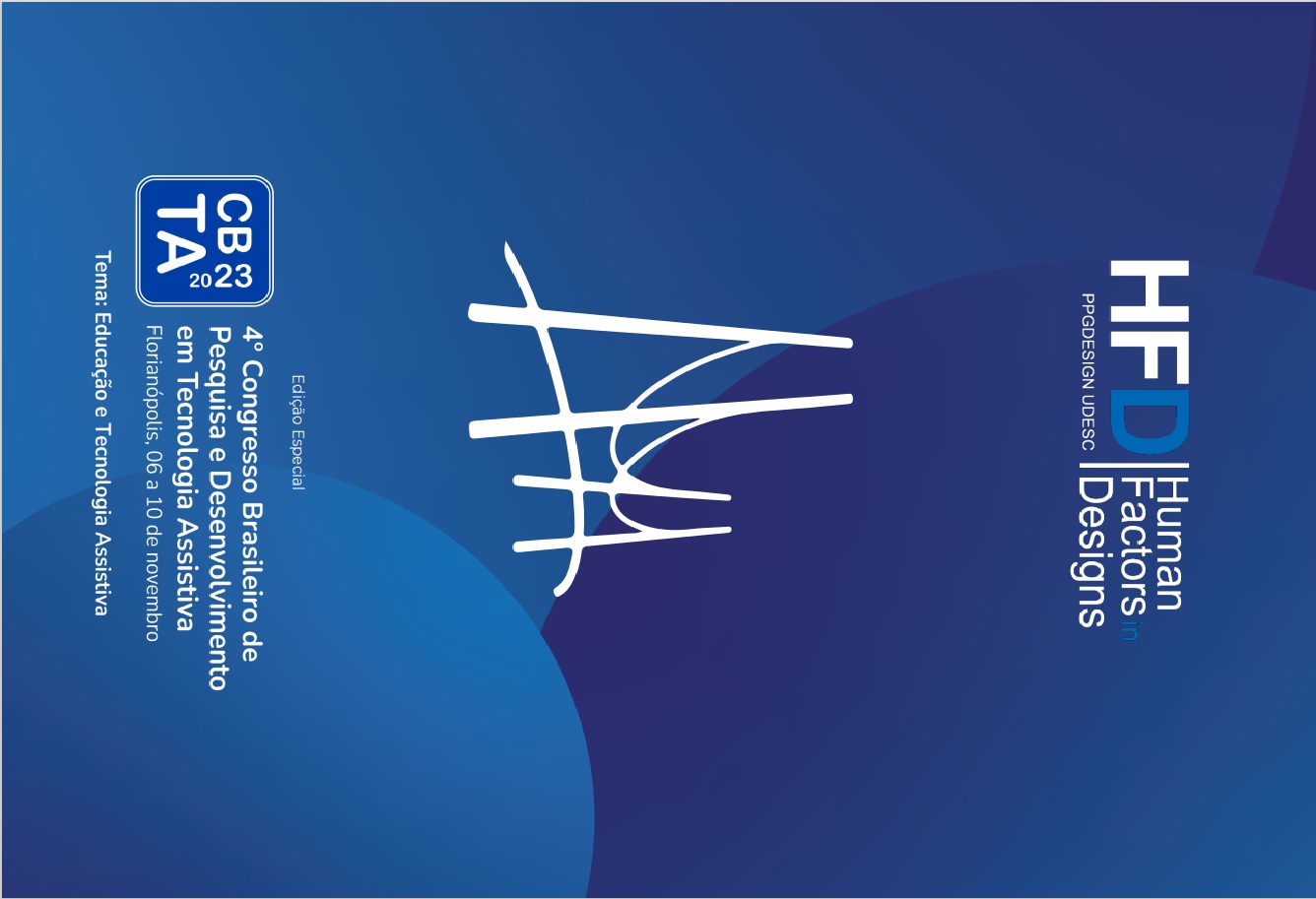Uma proposta de solução mecânica para transferências de cadeira de rodas com foco nas demandas de usuários idosos
DOI:
https://doi.org/10.5965/2316796312242023194Palavras-chave:
cadeira de rodas, idosos, transferênciasResumo
A manobra de transferência é uma atividade realizada na rotina de usuários de cadeira de rodas, entretanto, muitos usuários podem ter dificuldades em fazer com segurança e independência. Este trabalho relata o desenvolvimento de uma proposta para auxiliar transferências, focando nas necessidades do público idoso. A partir de uma metodologia integrada, busca-se a avaliação com usuários e profissionais de saúde, estudando o desconforto ao realizar transferências de cadeira de rodas. Como resultado, é estruturada uma proposta de solução aos diferentes tipos de cadeira de rodas. O projeto contribuí na ajuda na mobilidade pessoal de idosos, abordando diversas interfaces de transferência.
Downloads
Referências
ALVES, E.F.; BEZERRA, P.P. Fatores associados ao uso de cadeira de rodas por idosos institucionalizados. Ciência e Saúde Coletiva, Araranguá, v. 22, n. 11, p. 3607-3613, Nov. 2017.
BARBARESCHI, G.; HOLLOWAY, C. An investigation of factors affecting the performance of wheelchair transfers. Disability and Rehabilitation: Assistive Technology. Londres, v.14, n. 5, p. 479-488, Abril 2019.
SHIBATA, M.; ISODA, A.; OGASAWARA, T.; SATIO, K.; INOUE, Y. Verification of the causes of and countermeasures for falls using fall assessment score sheets in a municipal hospital. JOURNAL OF GERONTOLOGY AND GERIATRICS, Saitama, v. 70, n. 1, p. 40-49, 31 Oct. 2021.
RICE, L.A.; PETERS, J.; SUNG, J.; BARTLO, W.D.; SOSNOFF, J.J. Perceptions of Fall Circumstances, Recovery Methods, and Community Participation in Manual Wheelchair Users, American Journal of Physical Medicine & Rehabilitation, Urbana, v. 98, n. 8, p. 649-656, Ago. 2019.
TSAI, S.; PIRRUCCIO, K.; AHN, J. The brief window of time comprising a wheelchair transfer
confers a significant fracture risk on elderly Americans. Public Health. Filadélfia, v. 182, n. 1, p. 1-6, Jan. 2020.
COOK, A.M.; POLGAR, J.M.; ENCARNAÇÃO, P. Assistive Technologies: principles and practice. 5. ed. Saint Louis: Elsevier, 2020.
ANDRADE, F.C.D.; STEINBERG, N.; CLAY, S.L.; ALSTON, R. Fatores associados ao uso de tecnologia assistiva para auxiliar na mobilidade entre idosos no Brasil. Cadernos Saúde Coletiva. Urbana, v. 29, n. 1, p. 130-143, 2021.
MEDOLA, F. O. Design e tecnologia assistiva: interdisciplinaridade na pesquisa e desenvolvimento sobre mobilidade em cadeira de rodas. 2022. 164 f. Tese (Doutorado em Design), Faculdade de Arquitetura, Artes, Comunicação e Design, Universidade Estadual Paulista "Júlio de Mesquita Filho", Bauru, 2022.
Medola, Fausto O. et al. Biomechanical and perceptual evaluation of the use of a servo-controlled power-assistance system in manual wheelchair mobility. 2018 INTERNATIONAL SYMPOSIUM ON MEDICAL ROBOTICS, n. ISMR 2018. 2018, Atlanta, Biomechanical and perceptual evaluation of the use of a servo-controlled power-assistance system in manual wheelchair mobility, Bauru: IEEE, 2018.
SILVA, R.C.A. AVALIAÇÃO DA FORÇA APLICADA À ARTICULAÇÃO DO OMBRO EM CADEIRANTES DURANTE A MANOBRA DE TRANSFERÊNCIA. 2012. 58 f. Dissertação (Mestrado em Engenharia Mecânica) – Faculdade de Engenharia Mecânica Universidade Estadual Paulista "Júlio de Mesquita Filho", Guaratinguetá, 2012.
DOSS, A. Kommunikation mit RollstuhlfahrerInnen im Alltag: eine qualitative studie. Präv Gesundheitsf. Linz, v. 16, n. 1, p. 1-5, Jun. 2020.
SHAIKH-MOHAMMED, J.; SWOSTIK, S. D.; SARDA V.; SUJATHA S. Design journey of an affordable manual standing wheelchair. Disability and Rehabilitation: Assistive Technology. Chennai, v. 18, n. 5, p. 1-11, Fev. 2021.
NING, M.; YU, K.; ZHANG, C.; et al. Wheelchair design with variable posture adjustment and obstacle-overcoming ability. J Braz. Soc. Mech. Sci. Eng. Wuxi, v. 43, n. 197 p. 1-197, Mar. 2021.
Downloads
Publicado
Como Citar
Edição
Seção
Licença
Copyright (c) 2023 Human Factors in Design

Este trabalho está licenciado sob uma licença Creative Commons Attribution 4.0 International License.
Os artigos publicados pela revista são de uso gratuito, destinados a aplicações acadêmicas e não comerciais. Os direitos autorais são todos cedidos à revista. Os artigos cujos autores são identificados representam a expressão do ponto de vista de seus autores e não a posição oficial da revista Human Factors Design. O (s) autor (es) se compromete a sempre que publicar material referente ao artigo publicado na Revista Human Factors Design mencionar a referida publicação da seguinte forma:
Este artigo foi públicado originalmente pela Revista Human Factors Design em seu volume (colocar o volume), número (colocar o número) no ano de (colocar o ano) e pode ser acessado em: https://periodicos.udesc.br/index.php/hfd/index


